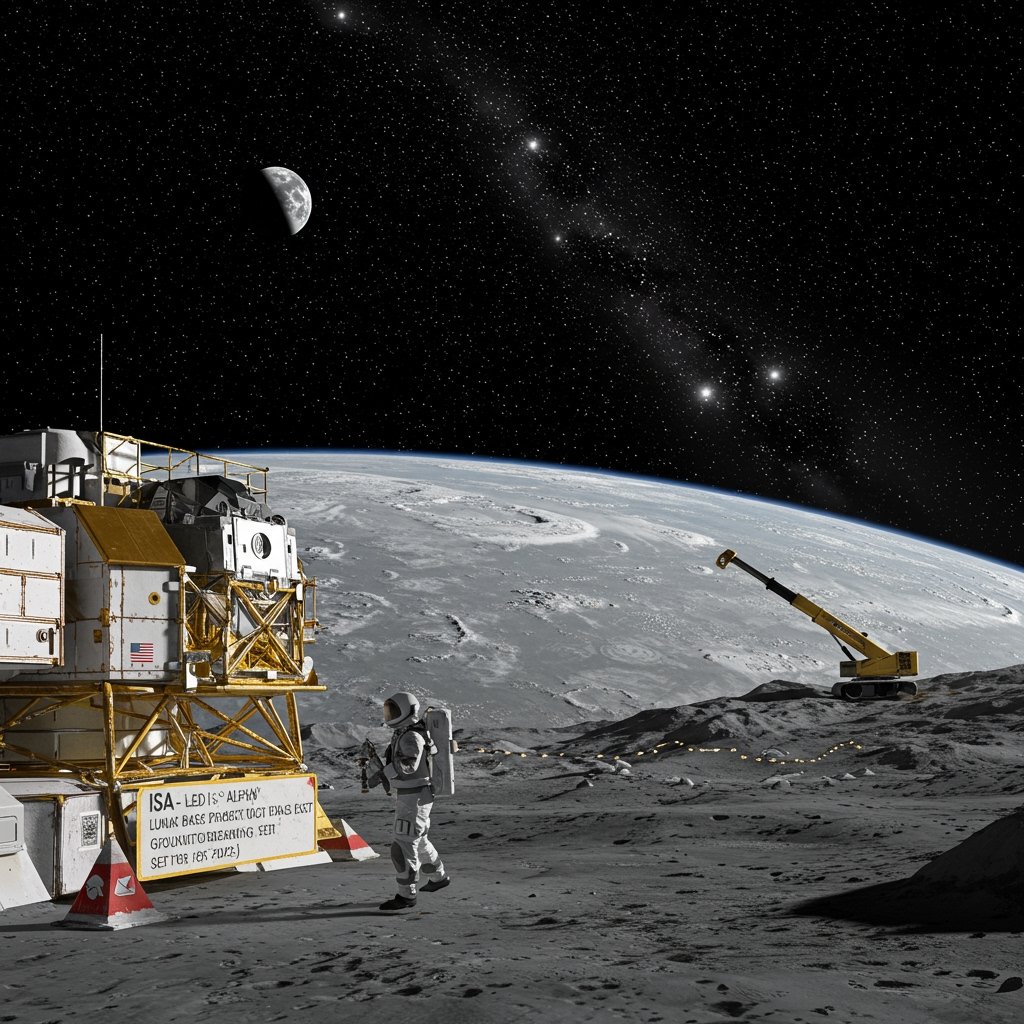A New Era Begins: Lunar Base Construction Approved
June 6, 2025 – A monumental stride towards establishing a permanent human presence beyond Earth was announced today by the International Space Agency (ISA). In coordination with a robust consortium of partners from Europe, Japan, and Canada, the ISA confirmed that the ambitious multi-nation lunar research base project, officially designated “Artemis Alpha”, has received clearance to enter its critical initial construction phase. This landmark decision marks a significant inflection point, transitioning the project from extensive planning and simulation into tangible preparation on the lunar surface.
The announcement, delivered by ISA Director Dr. Anya Sharma, detailed the immediate next steps and the projected timeline for this complex endeavor.
Project Timeline and Preparatory Missions
The core of the initial construction phase involves rigorous site preparation on the Moon’s Shackleton Crater, a location strategically chosen for its scientific value and potential access to vital resources, particularly water ice nestled within its permanently shadowed regions. This crucial groundwork is slated to begin in early 2026, pending final site validation.
Before the first construction materials are launched towards the Moon, a vital precursor mission is planned. Dr. Sharma outlined that Q4 2025 will see the deployment of advanced autonomous rovers to the designated area within Shackleton Crater. These highly capable robotic explorers will serve as the vanguard, conducting detailed surveys, scouting the final construction site, assessing topography, identifying potential hazards, and potentially commencing minor site conditioning tasks. Their data will be critical for finalizing the precise layout and optimizing the deployment strategy for subsequent missions, including the deployment of the first habitat modules which will follow this scouting phase.
Milestones Achieved
The project’s progression to this stage follows a series of successful and exhaustive preparatory activities. Last month (May 2025), critical component testing and comprehensive crew training were successfully completed at the Lunar Simulation Facility in Arizona. This state-of-the-art facility provided a high-fidelity environment mimicking the lunar surface conditions, allowing engineers to stress-test habitat components, life support systems, power generators, and construction equipment under simulated vacuum, extreme temperatures, and regolith challenges. Concurrently, astronaut crews underwent intensive training, practicing assembly procedures, operational protocols, emergency responses, and resource utilization techniques specifically tailored for the lunar environment. The successful conclusion of these simulations was a key prerequisite for obtaining the green light for lunar operations.
Strategic Goals and Vision: Continuous Presence by 2030
The “Artemis Alpha” base represents more than just a collection of structures; it is envisioned as a permanently inhabited research outpost and a gateway for future deep-space exploration. The overarching project aim is to establish a continuous human presence by 2030. This involves rotating crews of scientists, engineers, and technicians who will live and work on the lunar surface for extended periods, conducting cutting-edge research and preparing for missions further afield.
The primary focus areas for the base’s activities are resource utilization and deep space technology development. Leveraging Shackleton Crater’s potential water ice reserves is paramount to the sustainability of the base. In-situ resource utilization (ISRU) technologies will be employed to extract and process this ice into potable water for life support and, crucially, to produce oxygen and hydrogen for propellant, significantly reducing reliance on costly resupply missions from Earth. This capability is seen as essential for making lunar operations economically viable and for supporting missions further into the solar system.
Simultaneously, the “Artemis Alpha” base will serve as an unparalleled laboratory for the development and testing of deep space technologies. Systems for long-duration life support, advanced radiation shielding, closed-loop environmental control, reliable lunar power generation, and high-bandwidth communication in the cis-lunar space will be rigorously evaluated and refined in operational conditions. The lessons learned here will be invaluable for planning and executing crewed missions to Mars and beyond.
International Collaboration and the Path Forward
Dr. Sharma emphasized the collaborative spirit driving the project. “This is a truly global endeavor,” she stated during the announcement. “The expertise and resources contributed by our partners from Europe, Japan, and Canada are indispensable. Building a sustainable foothold on the Moon requires pooling the best minds and technologies humanity has to offer. Artemis Alpha is a testament to what international cooperation can achieve.”
The path to achieving continuous human presence by 2030 involves several critical stages beyond the initial site preparation and rover deployment. Following the ground scouting, the first habitat modules are slated for launch. These modules, designed to be either autonomously deployed or assembled with robotic assistance and initial crew support, will form the core living and working quarters. Subsequent missions will deliver power generation systems (such as solar arrays and potentially small nuclear fission reactors), life support systems, scientific equipment, and additional modules to expand the base’s capabilities and capacity. Logistics for transporting equipment and personnel between Earth and the Moon represent a significant logistical challenge currently being addressed through the development of heavy-lift launch vehicles and lunar landers by both the ISA and its partners.
The Shackleton Crater location, near the Moon’s South Pole, presents both opportunities and unique challenges. While the presence of potential water ice is a major draw for resource utilization, the region experiences extreme temperature variations between sunlit peaks and permanently shadowed areas, and navigating its rugged terrain requires advanced robotics and precision landing capabilities. The constant low-angle sunlight on some ridges offers potential for continuous solar power generation, another factor influencing the precise site selection within the crater rim.
The successful completion of component testing and crew training at the Lunar Simulation Facility in Arizona last month (May 2025) was a necessary validation step. Simulating lunar gravity (roughly one-sixth of Earth’s), the abrasive nature of regolith, the thermal vacuum, and the communication delays inherent in lunar operations allowed teams to identify potential issues before committing resources to lunar deployment. The training ensured that the initial crews arriving in early 2026 will be highly proficient in executing their complex construction and operational tasks under challenging conditions.
Looking towards 2030 and beyond, the “Artemis Alpha” base is expected to become a hub for a wide range of activities. This includes fundamental lunar science research, studying the Moon’s geology, history, and environment; serving as an astronomical observation platform shielded from Earth’s light and radio interference; and, crucially, acting as a staging point for crewed missions venturing further into the solar system. The ability to produce propellant on the Moon could revolutionize deep space travel, making missions to Mars, asteroids, and other destinations more feasible and less dependent on launching all necessary fuel from Earth’s deep gravity well.
Today’s announcement from the International Space Agency and its European, Japanese, and Canadian partners signifies a pivotal moment in space exploration history. The transition of “Artemis Alpha” into its construction phase, with site preparation scheduled for early 2026 in Shackleton Crater following the successful simulations in Arizona last month, firmly sets the stage for establishing continuous human presence on the Moon by 2030. The project’s focus on resource utilization and deep space technology development underscores its strategic importance, not just for lunar exploration, but as a foundational step for humanity’s expansion throughout the solar system. The deployment of autonomous rovers in Q4 2025 will be the next visible step in this ambitious journey.





